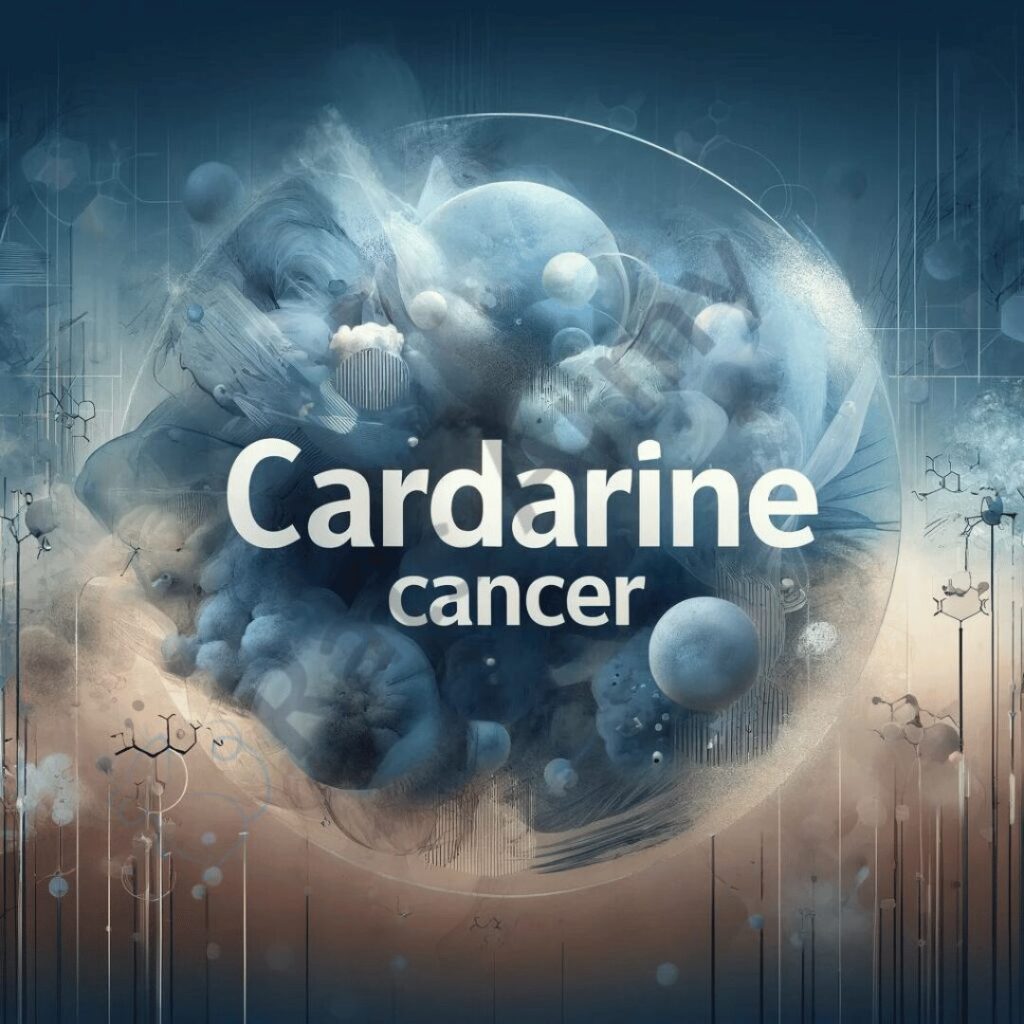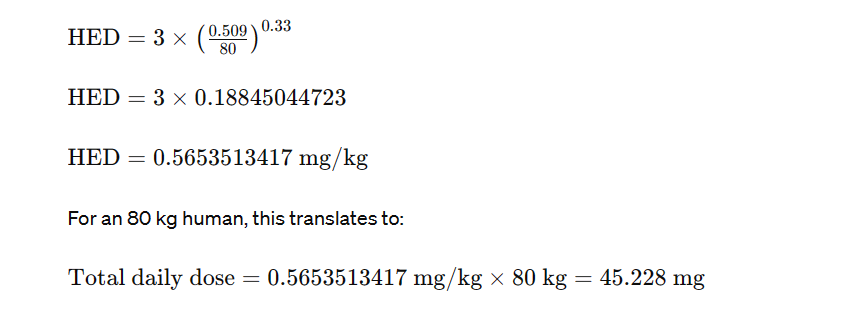Does Cardarine cause cancer?
In the discussion surrounding the potential carcinogenic effects of Cardarine, several critical misinterpretations often arise.
One pivotal misunderstanding is related to the extrapolation of data from animal studies to humans, which has led to significant confusion about the safety of Cardarine.

Table of Contents
ToggleMisinterpretations of Cardarine Cancer Research
During the 48th Annual Meeting of the Society of Toxicology in 2009—two years post the discontinuation of Cardarine—a series of findings were presented that showcased rapid cancer development in multiple organs of rodents subjected to long-term Cardarine exposure.
These results were initially obtained from studies where Han Wistar rats were administered Cardarine for nearly two years.
It is essential to recognize that the design of these studies inherently involves high doses over extended periods, far exceeding typical human usage patterns. The dosage that showed carcinogenic effects in these rats was the lowest one to do so, at 3 mg/kg/day over 104 weeks.
104 weeks is a long time on any substance…
This dosage, when considered in the light of the natural lifespan and cancer susceptibility of Han Wistar rats, distorts the perceived risk when directly applied to human scenarios without appropriate scaling and interpretation.
Han Wistar rats, the species used in these studies, have a median life expectancy ranging from 30 to 36 months, with a high incidence of adenocarcinomas naturally occurring irrespective of external substances. This short lifespan coupled with a high baseline risk of cancer makes them particularly sensitive models for carcinogenicity studies but also complicates the direct application of their data to humans.
This foundational understanding sets the stage for questioning how data derived from such models is often misinterpreted when discussing the safety and risks associated with Cardarine use in humans (R).
Lifespan of Han Wistar Rats
Understanding the lifespan of Han Wistar rats is crucial when interpreting the results of carcinogenicity studies involving substances like Cardarine.
These rats typically have a median life expectancy of about 30 to 33 months for females and 33 to 36 months for males, according to the research literature.
Such relatively short lifespans are significant because they influence the duration over which the substances are administered in studies designed to assess long-term effects, including carcinogenic potential.
The relevance of this information becomes evident when considering that these animals are often exposed to test substances for a significant portion of their natural lives.
For instance, a study spanning two years constitutes a substantial part of a Han Wistar rat’s life expectancy.
This prolonged exposure period is critical because it simulates a lifetime of exposure in a condensed timeframe, which is a common practice in toxicological studies to observe potential long-term effects rapidly.
Moreover, the incidence of spontaneous adenocarcinomas in Han Wistar rats is noteworthy.
These naturally occurring cancers complicate interpretations of study results, as it becomes challenging to distinguish between tumors induced by the test substance and those that might have developed regardless of external chemical exposure.
This high baseline incidence of cancer is a key factor that can render the extrapolation of data to humans problematic, especially when not adjusted for species-specific differences in cancer susceptibility and life expectancy.
The inherent characteristics of Han Wistar rats as a model organism, including their short life span and high predisposition to cancer, underscore the need for careful consideration and adjustment when applying findings from rat carcinogenicity studies to human health risk assessments. Such adjustments are vital to avoid overestimation of the carcinogenic risk of substances like Cardarine in humans based on rodent data (R).

Cardarine Dosage in Rodent Studies
In the examination of Cardarine’s safety profile, the dosage levels used in rodent studies are a pivotal factor.
These studies typically administer various dosages to assess the compound’s effects over a prolonged period, which in the case of Cardarine, spanned up to two years.
Such an extended duration is integral to understanding the long-term impact of the substance on rodent health, particularly in terms of carcinogenicity.
For Cardarine, the dosages in the rodent models varied widely, but a critical point of interest is the lowest dosage that resulted in observable cancer cell proliferation.
In the key studies, this dosage was established at 3 mg/kg/day and administered to Han Wistar rats.
This specific dosage was continuously provided over a period of 104 weeks—essentially the majority of the rat’s natural lifespan.
This long-term exposure is essential for the assessment of potential carcinogenic effects, which might not become apparent during shorter study durations.
The administration of 3 mg/kg/day in Han Wistar rats is particularly significant because it reflects a high relative dose when considering the body weight and metabolic rates of rodents compared to humans.
In toxicological research, rodents often receive higher doses to account for their faster metabolism and to ensure that any potential effects are observed within a shorter lifespan.
However, these high dosages can amplify the physiological responses to the substance, potentially leading to outcomes that may not be directly scalable to human scenarios.
The interpretation of these dosage levels is critical when discussing the safety of Cardarine for human use.
Without proper scaling and consideration of metabolic differences, direct comparisons of dosage and effects between species can be misleading. This misalignment often leads to misconceptions about the actual risk posed to humans based on rodent data.
Understanding the specific dosages and the context in which they are used in preclinical models is crucial for accurately assessing the implications of these findings for human health (R).
Typical Weight of Han Wistar Rats
The average body weight of Han Wistar rats plays a crucial role in toxicological studies, particularly when calculating dosage levels for testing substances like Cardarine.
Han Wistar rats, commonly used in such studies, typically weigh around 509 grams, which is approximately 0.509 kilograms (1lb).
This weight is fundamental for determining the dosage per kilogram of body weight, a standard metric in toxicology to ensure that all animals receive a comparable dose relative to their body mass.
Understanding the average weight of these rats is essential not only for the initial dosage calculation but also for scaling these dosages to equivalent doses in humans.
The use of average weight helps standardize the administration of the test substance across different individuals within the study, providing a more uniform basis for observing the effects and potential toxicity of the substance.
Moreover, the consistency of this weight metric aids in the replication of studies and in the comparison of results across different research trials.
It ensures that any observed effects are more likely attributed to the substance being tested rather than variations in dosage administration due to weight differences among the subjects.
Additionally, the average weight is pivotal when applying conversion factors to translate findings from animal models to humans.
This conversion takes into account not only the weight difference but also adjusts for the metabolic rate differences between species, which can significantly influence the biological impact of a compound.
Recognizing the typical weight of Han Wistar rats, therefore, provides a foundation for accurately assessing the dosage that these animals are exposed to and for making informed judgments about the implications of these doses for human health risks (R).

Calculating the Human Equivalent Dose
Calculating the Human Equivalent Dose (HED) from animal studies is a crucial step in evaluating the potential effects of substances like Cardarine on humans. The HED provides a method to estimate an equivalent dosage in humans based on the results observed in animal models, considering differences in body weight and metabolism.
The formula used for this calculation is:

This equation adjusts the dosage from the animal model to what would be applicable for humans, taking into account the body surface area scaling factor (0.67), which accounts for metabolic rate differences between species. The exponent (1-0.67) is used because metabolic rates typically scale with body surface area, which in turn correlates with weight to the power of 0.67.
To apply this formula in the context of Cardarine:
- Animal Dose: The dose used in the rodent study was 3 mg/kg/day.
- Animal Weight: The average weight of Han Wistar rats is typically around 0.509 kg.
- Human Weight: Assuming an average human weight of 80 kg for calculation purposes.
Inserting these values into the formula gives:

For an 80 kg human, this translates to:
Total daily dose=0.5653513417 mg/kg×80 kg=45.228 mg
Total daily dose=0.5653513417 mg/kg×80 kg=45.228 mg
This calculated dose of approximately 45.228 mg daily for an 80 kg (176lbs) individual represents the human equivalent of the lowest dose in rodents that resulted in cancer cell proliferation after prolonged exposure. It’s essential to understand that while this calculated dose provides a baseline for theoretical risk assessment, the actual risk in humans might differ based on various factors including genetics, overall health, and lifestyle.
Calculating the HED is fundamental for translating preclinical findings to potential human outcomes, offering a scientific basis for evaluating the safety margins of pharmaceuticals and chemicals such as Cardarine.
Estimating the Human Equivalent Dose That Induced Cancer in Rats
To further understand the implications of Cardarine’s effects observed in rodent studies for human health, it is crucial to estimate the human equivalent dose (HED) that correlated with cancer development in these models.
This estimation is significant because it helps contextualize the doses at which adverse effects occurred in animals in terms of human exposure levels.
From the earlier calculation, we determined that the lowest dose in rodents that showed cancer cell proliferation was 3 mg/kg/day.
Using the standard conversion formula, this dose translates to an HED of approximately 0.565 mg/kg for a typical 80 kg human, equating to a daily dose of around 45.228 mg.
This dose level is instructive because it provides a benchmark against which human exposure can be evaluated, particularly in the context of long-term safety and carcinogenic potential.
It’s important to note that this HED is significantly higher than the typical dosages used in human clinical trials or even those used recreationally.
For instance, in most human trials and recreational use cases, Cardarine is administered at doses ranging from 10 mg to 20 mg per day—substantially lower than the calculated HED linked with cancer in rats.
However, it is critical to approach these findings with caution. The direct extrapolation of data from animal studies to humans must consider several factors:
- Species Differences: Rats and humans differ in many physiological and metabolic ways, which can influence how a substance affects each species.
- Exposure Duration: The rodents in these studies were exposed to Cardarine for a significant portion of their lifespan, which is not typically paralleled in human use scenarios.
- Genetic and Environmental Factors: Humans have varying genetic backgrounds and environmental exposures that can modify the risk and outcomes associated with any substance, including Cardarine.
These complexities underscore the need for careful interpretation of the data from animal studies when estimating risks for humans.
The estimated HED that induced cancer in rats provides a valuable point of reference but must be integrated with other data, including clinical trial results and epidemiological studies, to form a comprehensive assessment of Cardarine’s safety in humans.i

Incidence of Cancer in Humans Due to Cardarine
The concern about the potential carcinogenicity of Cardarine in humans largely stems from rodent studies, yet translating these results to human incidence requires careful consideration of the available data.
To date, there are limited direct data linking Cardarine use to cancer development in humans.
This absence of clear evidence is critical in the ongoing debate about the safety of Cardarine.
In human clinical trials and recreational use, Cardarine has been administered at much lower doses—typically 10 to 20 mg per day—than those associated with cancer in rodent models.
These human doses are substantially lower than the estimated human equivalent dose that induced cancer in rats (approximately 45.228 mg for an 80 kg individual).
Furthermore, human exposure durations in these studies and anecdotal reports rarely exceed a few months, significantly shorter than the near-lifespan exposure in rodent models.
Observational data from these human trials have not reported any significant adverse effects or cancer development linked to Cardarine use.
In clinical settings, where Cardarine was tested at doses up to 10 mg per day for durations up to 12 weeks, there have been no documented cases of cancer arising directly from its use.
These findings are supported by multiple studies and reviews which highlight the absence of serious adverse effects.
Moreover, anecdotal evidence from individuals using Cardarine recreationally also suggests a low incidence of cancer.
However, these self-reported cases lack the rigor of controlled studies and should be interpreted with caution.
Recreational users typically do not use Cardarine continuously for extended periods, which differs markedly from the prolonged and high-dose exposure in animal studies.
The question of whether Cardarine directly causes cancer in humans remains open due to the lack of definitive long-term data and the complexities involved in extrapolating from animal models to humans.
While the rodent data suggest a potential risk, the actual risk in humans, especially under typical usage conditions, appears to be lower, though still not entirely quantifiable.
Factors such as genetic predisposition, lifestyle choices, and environmental exposures also play significant roles in modulating any potential risk and must be considered in any comprehensive risk assessment.
Given these considerations, while it is not possible to definitively state that Cardarine use at the levels observed in human studies and recreational use leads to cancer, the potential for such outcomes cannot be entirely ruled out. Ongoing research and more extensive epidemiological studies are needed to provide clearer answers.
Assessing the Carcinogenic Potential of Cardarine
The carcinogenic potential of Cardarine continues to be a topic of significant scientific and public health interest, especially considering the discrepancies between animal study results and human usage data.
To accurately assess this potential, a multifaceted approach that incorporates data from various scientific domains is required.
Analysis of Animal Studies:
Animal studies provide foundational data on the potential toxicological effects of substances, including carcinogenicity. However, as discussed, these studies often involve high doses and continuous exposure, which do not directly correlate with typical human usage patterns. The extrapolation from these studies to human risk assessment must be adjusted for dosage, exposure duration, and interspecies metabolic differences.
Clinical Trial Insights:
Human clinical trials offer valuable insights into the safety and efficacy of substances like Cardarine. These trials are designed to monitor for adverse effects, including potential carcinogenic effects, under controlled conditions.
For Cardarine, clinical trials have generally not shown direct evidence of carcinogenic effects at doses up to 10 mg per day over periods up to 12 weeks. These results are crucial as they reflect more realistic human usage scenarios compared to lifelong exposure in rodents.
Epidemiological Evidence:
Epidemiological studies could provide further clarity on the long-term effects of Cardarine by examining the incidence of cancer among populations exposed to varying doses over different periods. However, such studies on Cardarine are currently limited, and more extensive research is needed to draw definitive conclusions.
Mechanistic Studies:
Understanding the biological mechanisms through which Cardarine acts can also inform its carcinogenic potential. Studies examining how Cardarine influences cellular pathways, gene expression, and tumor growth could provide insights into whether and how it might contribute to cancer development.
Regulatory and Advisory Body Assessments:
Evaluations by regulatory and health advisory bodies, which integrate data from toxicology, clinical trials, and epidemiological research, are essential for providing balanced risk assessments.
These bodies can offer guidelines based on the totality of evidence, adjusting recommendations as new data become available.

Conclusion
Given the current evidence, it is clear that while the animal studies suggest a potential risk, the actual carcinogenic potential of Cardarine in humans under typical usage conditions remains uncertain.
The lack of concrete data from long-term human studies and the inherently different conditions of animal testing highlight the need for caution but also indicate that the direct translation of animal data to human risk may overestimate the actual danger.
Continued research, including longer-term human studies and detailed mechanistic insights, will be essential to provide a clearer picture of Cardarine’s safety profile and to guide appropriate regulatory responses.
It’s imperative amidst these findings to research with the highest quality Cardarine available from trusted sources.
FAQ
Does Cardarine Cause Cancer?
No.
It doesn’t and hasn’t caused cancer in any humans. There hasn’t been any evidence.